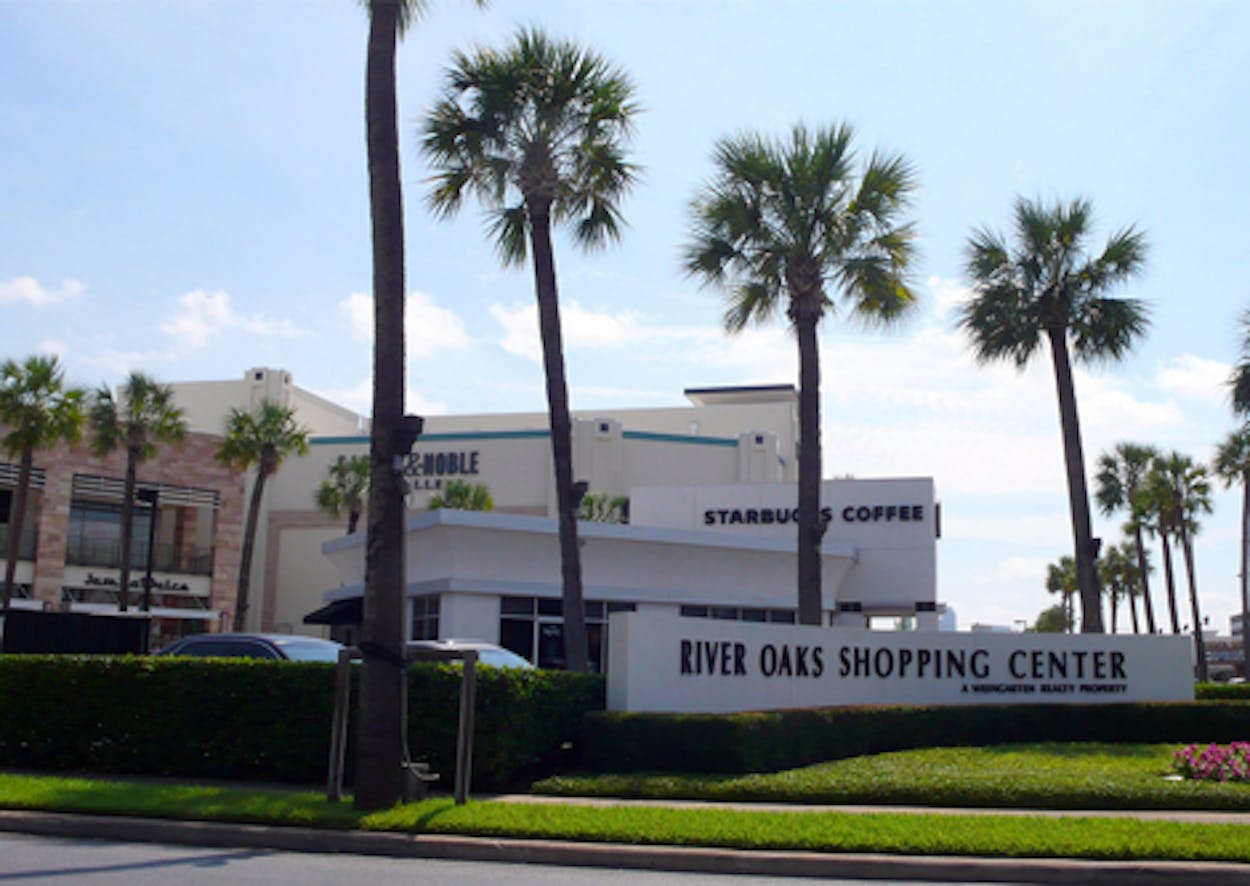Houston is one of the few cities in America where the possible obliteration of a strip center can produce howls of grief and rending of garments. That’s close to what happens when preservation-minded locals cruise the westerly blocks of West Gray Street and spot the squat turrets and sand-colored “bricks” that now obscure the River Oaks Shopping Center, an architectural gem that dates back to 1937.
The conversion of this center from Art Deco classic to forgettable generic has occurred just as Houston, a city that once prided itself on its passion for moving forward without memory or regret, has begun preserving a tiny fraction of its historic structures.
Thanks to Mayor Annise Parker—who has expended a hefty share of political capital on what some consider a kamikaze attack on beloved property rights—the city last year passed a historic preservation ordinance with a few teeth. (Some restoration projects that have been in the works for years have finally come to fruition: the recently completed $32 million public/private renovation of the Julia Ideson Building of the Houston Public Library downtown and the 1910 Harris County Courthouse, a $65 million bit of civic C.P.R.) But despite these successes, the River Oaks center is a failure that has galvanized the city’s preservation community.
Preservation debates have focused on two shopping centers owned by Weingarten Realty Investors, a Houston-based national real estate firm that was once family owned but is now publicly traded. The properties in question are old only by local standards: both the River Oaks Shopping Center and the Alabama Shepherd Shopping Center, just a mile or so away, date back to the late-1930s.
They also happen to be dear to inhabitants of the prosperous neighborhoods nearby—countless River Oaks and Montrose homies no doubt saw their first kiddie movies at the Alabama and River Oaks Theatres, the latter being the oldest continuously operating cinema in town.
The River Oaks center was a flawless example of Art Deco, with clean lines, glossy black tile, streamlined metal awnings and twin curves near the default entrance to the posh neighborhood of the same name. The palm trees lining the street added a hint of Beverly Hills glamour. The Alabama Shepherd Center wasn’t as pretty on the outside, but the theater’s interior contained some striking Art Deco murals that survived its conversion to a Bookstop in the mid-1980s.
Trouble started in 2006, when the Greater Houston Preservation Alliance got wind of Weingarten’s intent to demolish a section of the River Oaks center to make way for a big-box store—specifically, a Barnes & Noble. It may have been the first time in Houston’s history that news of a potential demolition wasn’t met with a titanic yawn.
“Thousands join fight for River Oaks center,” declared a Houston Chronicle headline that also warned, somewhat dubiously, “Black Eyed Pea may go first.” There were petitions and marches, and support from council members and socialites. The city promised tax breaks. The Chronicle editorialized. Protesters even bought Weingarten stock so they could demand answers at the annual stockholders meeting. They might as well have been trying to woo the North Korean government.
Drew Alexander, Weingarten’s chief executive, would have none of it. “It was like, ‘talk to the hand,’” a competing developer told me.
In other words, Houston, long dominated by developers, has had to fight its past in order to save it. And, as often happens, arguments about aesthetics degenerate into arguments about class. “Certainly people in notoriously crime ridden Acres Home might suggest some different priorities for the city,” Roy R. Reynolds, a pro-Weingarten, pro-property rights type wrote to the Chronicle.
Alexander has remained mostly silent throughout the debate. Responding to an interview request for this story, he sent an email attesting to his commitment to maintaining the center’s architectural character while attracting high-quality retailers, restaurants and entertainment establishments.
In 2007, the bulldozers rolled, eliminating half of the crescent-shaped west end of the River Oaks center, with rumors of more demolition—or demolition by neglect—to come. (The mold on the air conditioning vents in the River Oaks Theatre can mimic the density of arctic tundra.)
Neighbors lost a fight to block a multi-story parking garage but were able to stop a porte-cochère that would allow a tony restaurant to have an open air patio above. “Working with Weingarten,” one of the neighbors hissed to the newspaper, “is like working with the devil.”
The makeover has continued apace: Weingarten changed the lines and color scheme of the center and installed turrets as punctuation points. And, just before Thanksgiving, the murals were disappeared from the still tenantless Alabama Theatre.
And so, as often happens here, a distinctive structure has been replaced by a duller one, which may have been the goal for a developer trying to lure national chains. “Most of these guys want to get the ball right down the center of the fairway,” one more inspired competitor explained.
Or, as Minnette Boesel, the mayor’s assistant for cultural affairs, puts it: “Cities across America are embracing their heritage and their architecture. Weingarten is just not keeping up.”
In Houston, those are now fighting words.









